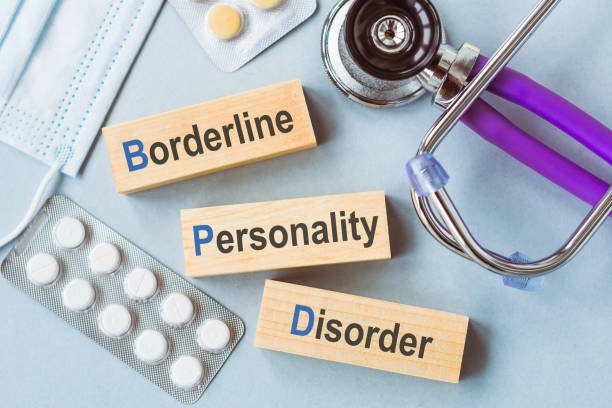It’s Difficult to Get Along with the Recurring Emotions! Understand the 9 Typical Symptoms and Treatments of Borderline Personality Disorder
Have you ever heard of Borderline Personality Disorder (BPD)? Don’t be misled by the word “marginal” in the name of the disease. These are two completely different things from the “Borderline people” we hear in our daily lives. Borderline personality disorder, also known as type B personality disorder, means that patients are prone to extreme behaviors or often emotionally unstable.
For a long time, borderline personality was a general category that generally referred to all mental disorders that could not be classified according to established standards. It was not until the past decade that the symptoms, diagnosis and treatment of borderline personality disorder were determined. This will be further introduced below.
Symptoms of Borderline Personality Disorder
Borderline personality disorder is difficult to diagnose in its early stages because some symptoms of borderline personality disorder are similar to those of other mental illnesses, and sometimes appear with other mental illnesses, such as anxiety disorders and posttraumatic stress disorder. Stress Disorder), bipolar disorder (Bipolar disorder), depression (also known as depression), and bulimia nervosa (Bulimia nervosa).
According to the Diagnostic and Statistical Manual of Mental Disorders, 4th Edition (DSM-IV) published by the American Psychiatric Association, the symptoms of borderline personality disorder include the following 9 types. As long as 5 or more of them are met, you are likely to suffer from borderline personality. obstacle:
- Whether it is really possible or imaginary, patients will try their best to avoid being abandoned by family and friends.
- Has an erratic coping style with others, erratic moods, and displays of manipulative intent.
- Distorted and unstable self-image, which in turn affects mood, values, opinions, goals and relationship maintenance.
- Behavior is impetuous, and may even act impulsively regardless of the consequences, such as excessive consumption, dangerous driving, drug abuse, promiscuity, etc.
- Self-injurious behavior, including attempting suicide or threatening others with suicide.
- Emotions such as depression, irritability, and anxiety can last for a few hours but rarely last more than a few days.
- Feeling empty or bored for long periods of time.
- Inappropriate, overly emotional, or uncontrollable anger is often accompanied by feelings of shame and guilt.
- Produce dissociative feelings or stress-related paranoia.

Different from DSM-IV, the International Classification of Diseases, Injuries and Causes of Death, Tenth Edition (ICD-10) issued by the World Health Organization (WHO) refers to borderline personality disorder as Emotionally Unstable Personality Disorder. EUPD), and is divided into the following 2 types:
- Impulsive type:
Impulsive type will exhibit behaviors such as emotional instability, easy loss of control, and frequent conflicts with others, especially when impulsive behavior is blocked or criticized. - Borderline:
Borderline people feel uncertain about their self-image and goals, feel chronically empty, and are prone to falling into intense and emotionally unstable relationships.
3 major causes of borderline personality disorder
Although the cause of borderline personality disorder is still open to debate, experts have studied three possible causes:
- Genetic inheritance:
It does not mean that a special gene will cause borderline personality disorder, but if there is a history of close relatives in the family history, there will be a higher chance of developing this disorder. - Environmental factors:
Experiencing major traumatic events in life, such as domestic violence or sexual violence, or being separated from caregivers in early childhood, or experiencing childhood emotional neglect. - Brain function:
For people with borderline personality disorder, the emotional regulation system in the brain is different from that of ordinary people. The part of the brain that controls emotions and the part that makes decisions cannot communicate with each other, causing patients to have repetitive emotions. Impermanence.
How is borderline personality disorder treated?
There are three types of treatments for borderline personality disorder:
- Psychotherapy:
including dialectical behavior therapy (DBT), cognitive behavioral therapy (CBT) and psychodynamic psychotherapy. - Medication:
Although medications cannot cure borderline personality disorder, they can help patients relieve related symptoms, such as antidepressants, which can help relieve mood and restless reactions. - Short-term hospitalization:
If the patient is under extreme pressure or even engages in excessively violent behavior such as threatening suicide, it is recommended to send him to a hospital for observation to ensure the patient’s life safety.
Suicide cannot solve the problem, but it leaves the family with great sorrow. Please cherish life and give yourself another chance.













